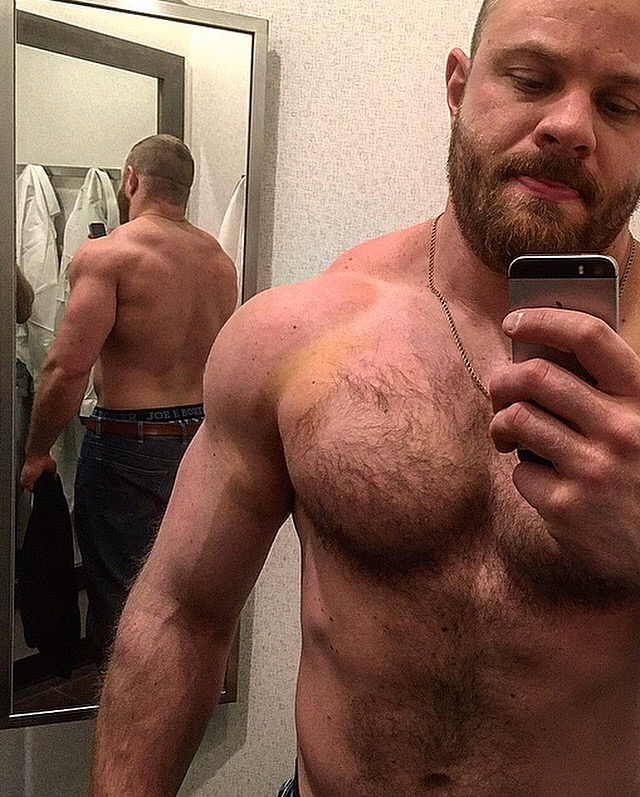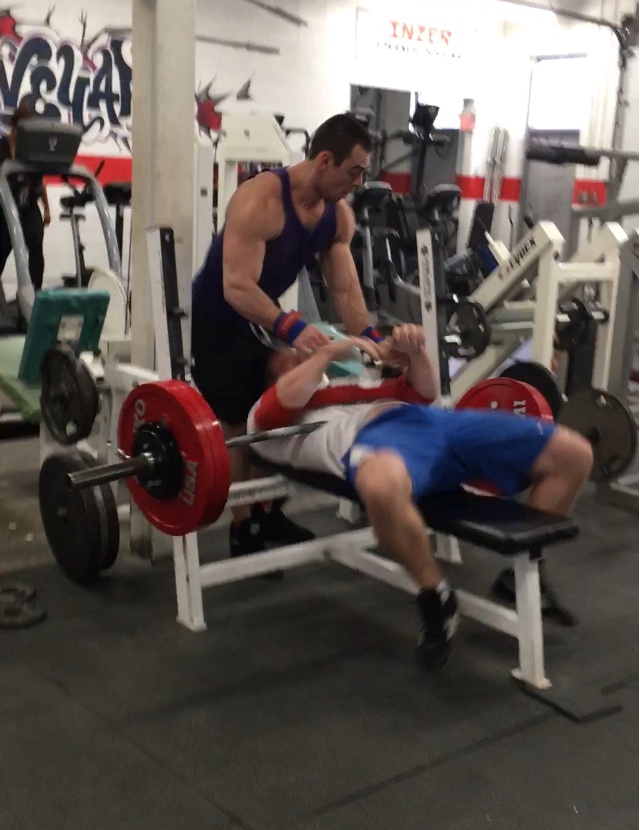9 weeks ago, I tore my left pec bench pressing. It was a full tear of the muscle from the tendon, and I had 7 weeks between the injury and the reattachment surgery.
I found that when I was searching the internet for info, I couldn’t find many first-hand accounts of the injury, what to do while waiting for surgery, the surgery itself, and the recovery process. I’ll do my best to explain for those dealing with this injury.
View this post on Instagram
I had consulted with three different orthopedic surgeons with varying opinions, and the first two guys were hesitant. I’m 2 weeks post surgery and feeling better every day. Please note, this is my experience and only that. Your injury might be different – so listen to your doctor.
The actual injury itself
My left pectoral muscle (chest) tore from the tendon (attached to the humerus, or upper arm/bicep) during a 455lb bench press. Pictured with a blue X. This was 3 weeks after the injury when the swelling and bruising had gone down. No attachment on the humerus.



Bruising: Some people bruise easier than others. I didn’t have much bruising – as seen here. I’ve never bruised much. This was 1 week post injury.
Before Surgery
I made the mistake of going to a glorified walk-in clinic (an urgent care center) which meant that I wasn’t treated as an emergency and was booked for surgery 7 weeks later. In addition, the original doctors who assessed the injury did not have any familiarity with strength athletes. This ended up being a blessing in disguise because it allowed me to push even harder (with the exception of chest work) for the next 7 weeks leading up to surgery.
I hit a 720lb deadlift five days before my surgery, as well as a beltless personal best against bands two weeks prior.
View this post on Instagram
View this post on Instagram
I kept eating, training, and working around the injury. No excuses.
Surgery
Originally, the surgery was supposed to be 1 hour with the thought that they would just pull the muscle back across, and sew it to the tendon. Unfortunately because of the length of time since the injury, the muscle had shortened a lot, and because I am relatively strong, the stitches wouldn’t hold on their own. They ended up drilling through my humerus and putting in anchors to hold the muscle in place so that the tendon and muscle could heal into each other and create a strong bond. The tear happened where the muscle meets the tendon, which meant that they had to use more sutures and it was more difficult because of the tightness. They used the Krackow Suture technique to bring the muscle and tendon together.



The bone was drilled to allow the anchors to be put in.

They stitched me up, wheeled me out and sent me home. I ended up with 16 stitches to close the incision, and somewhere around 50-75 stitches inside the muscle, tendon, and drilling.

Emily and me right after surgery



My surgeon was Dr. Elmaraghy from St. Josephs hospital in Toronto. He is also a professor of orthopedic surgery at University of Toronto, and I am very pleased with the work him and his team did. I had numerous referrals to him, and know other powerlifters who had upper body injuries operated on by him. Due to the extent of my injury and it not being a standard pec tear (where the tendon comes off the bone), I know he was the right guy to do the job, and after reading the surgery report, it sounded very complex. Thank you very much Doc.
https://stjoestoronto.ca/physicians/dr-amr-elmaraghy/
All in all – I must say that although injuries suck, and it’s frustrating being hurt – It comes with the territory.
I don’t know a single athlete who has competed at a high level for an extended period of time (longer than 2-3 years), that hasn’t gotten hurt. This injury is number 5 for me (while in the gym or competing).
Other injuries include a torn lat, dislocated shoulder (while wearing a bench press shirt), torn quad + patellar tendon, and dumping 410lbs on my chest – putting me in intensive care (ICU) for 3 days with internal bleeding and 3 ruptured organs.


Because I wont be building any new muscle for the next 8 weeks, I can focus on getting leaner. Light lifting, cardio, and clean eating. When I’m cleared to train hard again, I will push my lower body HARD, while easing into upper body work with high volume and high reps.
I hope this post helps if you’ve just suffered a torn pec, or any other muscle tear for that matter. Feel free to email me with any questions about your situation or injury.
Thanks for reading,
Dan


